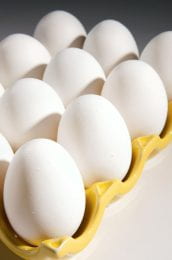Most home kitchens have one oven. That reduces space for cooking other tasty dishes for holiday meals.
During the holidays, try using another method for cooking the turkey. Outdoor methods include a grill or smoker, deep fat turkey fryer, and the “Big Green Egg.” Indoor options include an electric roaster, pressure cooker or even the microwave.
Can two turkeys be roasted in one oven? The cooking time is determined by the weight of one bird—not the combined weight. Use the weight of the smaller bird to determine cooking time. Use a food thermometer to check the internal temperature of the smaller bird first and then check the second bird. A whole turkey is safe when cooked to a minimum internal temperature of 165 °F as measured with a food thermometer. Check the internal temperature in the innermost part of the thigh and wing and the thickest part of the breast. When cooking two turkeys at the same time make sure there is enough oven space for proper heat circulation.
No matter which method you choose to get your turkey to the table, have a food thermometer handy so you can make sure the turkey has reached the safe minimum internal temperature of 165 °F. Let the turkey stand for 20 minutes before carving.
Learn more about details and timing when using other cooking methods for turkey from the USDA.

 Recent recalls of lead found in
Recent recalls of lead found in  Halloween is almost here! When deciding what treats to buy to hand out to neighborhood goblins, keep in mind those who have food allergies. Always read the ingredient statements on treat wrappers and packaging to identify food allergens and to identify other suspicious problems.
Halloween is almost here! When deciding what treats to buy to hand out to neighborhood goblins, keep in mind those who have food allergies. Always read the ingredient statements on treat wrappers and packaging to identify food allergens and to identify other suspicious problems.
 National Clean Your Refrigerator Day is November 15th! But this cleaning step is important many times of the year. One example is after a power outage.
National Clean Your Refrigerator Day is November 15th! But this cleaning step is important many times of the year. One example is after a power outage.

